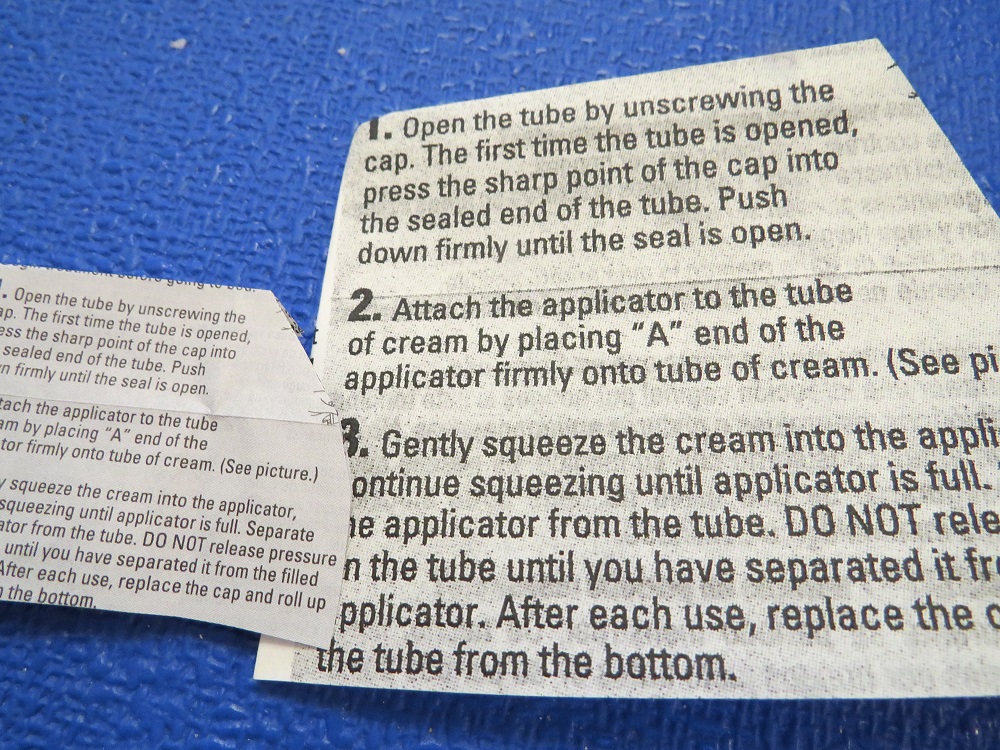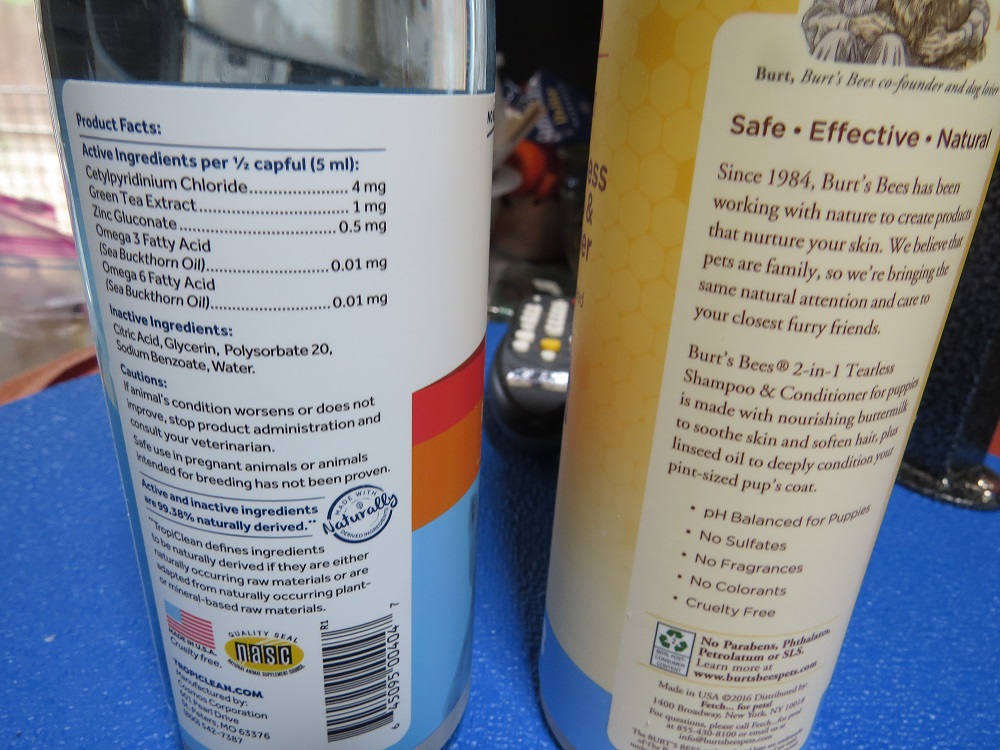When is the last time you tried to read the instructions that come with your new medication? Or, the instructions for putting together a shelving unit? Or, the instructions for putting together a live trap to catch the new infestation of rats in the wood pile? We always used to complain about the “fine print” in legal contracts. You know – “always read the fine print.” Now, it seems the “fine print” has crept into our daily lives. The afore mentioned instructions. The ingredient lists on packaged foods. Names of addressees on packages.

(Photo shows comparison of original instruction’s print and 200% enlargement.)
Sometimes, the print is no larger than a period … a dot, if you will … on a page of readable print. Is it my vision only, or does the manufacturer intend to frustrate all of the users who attempt to use their product by printing the words on the paper so small that even using a magnifying glass does not help! Not a round magnifying glass. Not one of those full-page, magnifying sheets. Not a combination of magnifying glass and squinting!
Are the manufacturers trying to save paper? Well, consider this. Everyone does not have a copier to use to enlarge the print. And, enlarging the print is a trial and error situation. You guess at the percentage of increase – maybe, 200%. And, that either works or it doesn’t. And, if it doesn’t work (and it usually doesn’t), you make another guess at how much larger you need – maybe, 150% or 225%, this time. How many sheets of perfectly good paper get ruined by this guessing game is difficult to estimate. Then, what do you do with those wasted sheets?

(Photo shows print on bottles of dog mouth wash and oatmeal shampoo for dog.)
Color on color is certainly not helpful. When we put white print on a color or on black, we called it “reverse printing.” Actually, “reverse printing” may not be an accurate label, but the white or lighter colored letters appear to be printed on a darker background. Now, it is green on green, red on black, yellow on orange … you get the idea. I often wonder if the creators of those colorful pages even attempt to read the print. Do they ask other people if they can read the content?
And, street signs! Magnifying glasses and squinting do little to help the driver read street signs. There are some street signs that are readable. Mostly, they are on the streets and boulevards that are easily recognized. Colorado Blvd. University Blvd. Those identifiers are usually very large and very readable, even when it is dark. Poor street lighting also makes reading those little street signs impossible to read.
Then, of course, there is the map. Yes, some of us still use maps to find our way. Not those GPS things. A magnifying glass helps in this situation, at home – but, who carries a magnifying glass in the car? It takes a little work to find Seward, Nebraska, the home of one of my favorite book stores – Chapter Books. The search for Seward allows the map user to find all sorts of things to be discovered about the area.
Is it possible to prevail upon the manufacturer to write instructions, ingredients, etc., in a font size that all of us can read – even those of us that are old and who have vision difficulties? I don’t know, but it might be worth a try. Write to the manufacturer. The “contact us” section of the website gives you the option to air your opinion(s) and suggestion(s). Use it. It will cost you nothing but a little time.
Be safe and well.
The Cranky Crone
If you have thoughtful feedback or questions, please let me know with a comment below.
4 replies on “How Big Is Your Print?”
An important message. I’m not yet 60 and have normal vision (with bifocals), and I find it hard to read the print on many things without taking off my glasses and holding it close under very bright light. It’s also hard to locate the directions on medicine bottles because they bury them in a string of fine print about ingredients and cautions.
Sometimes my large print books aren’t large enough! I still have to use my readers on some!
And you failed to mention that the fine print also includes Spanish and French!
I can read most of the fine print on packaging, but I understand the problem. It does seem like they are making the print smaller on purpose.